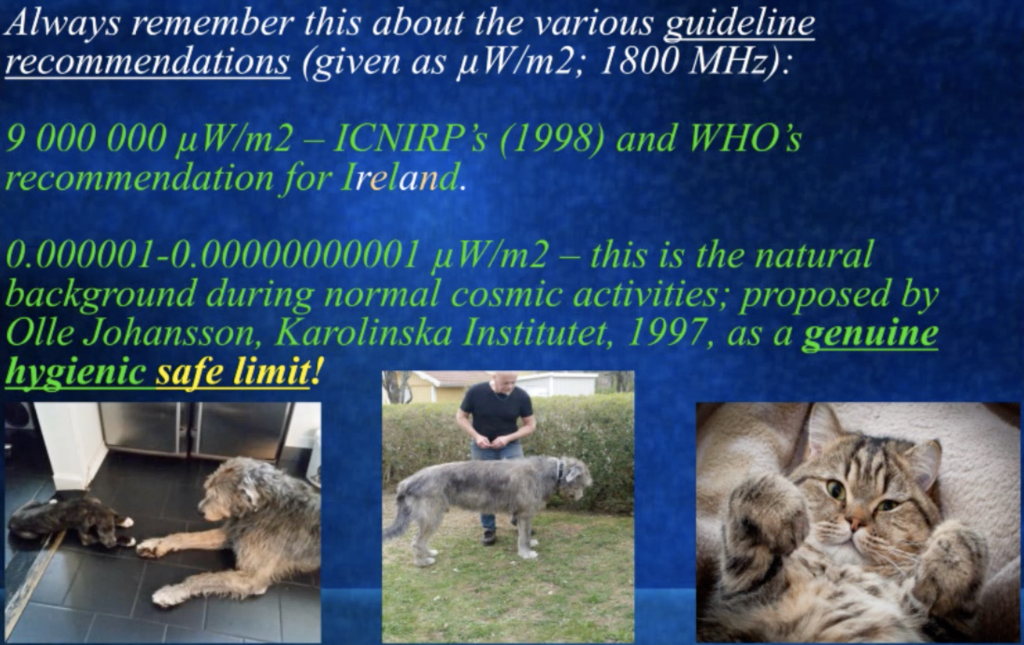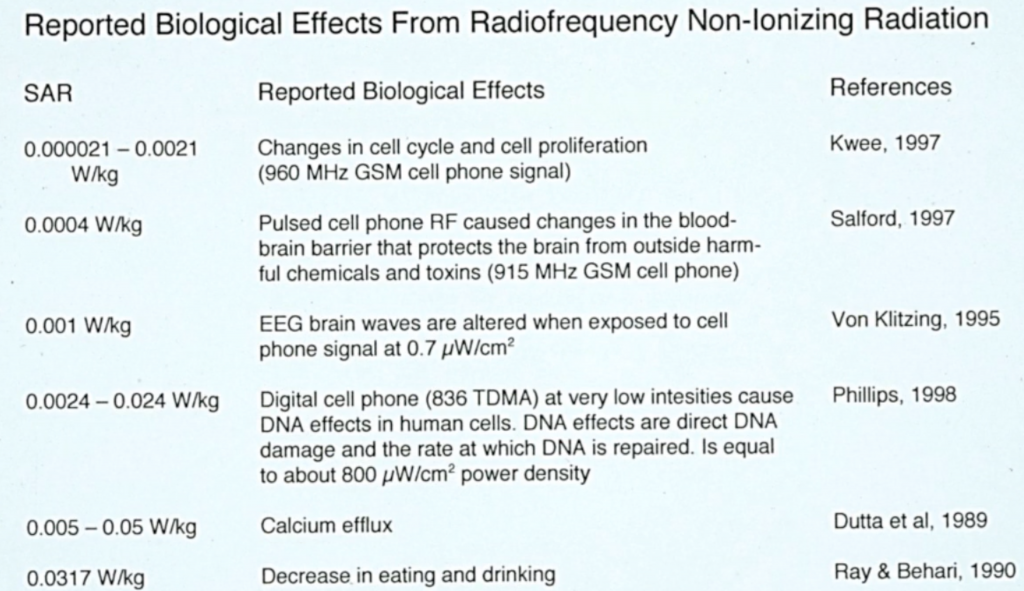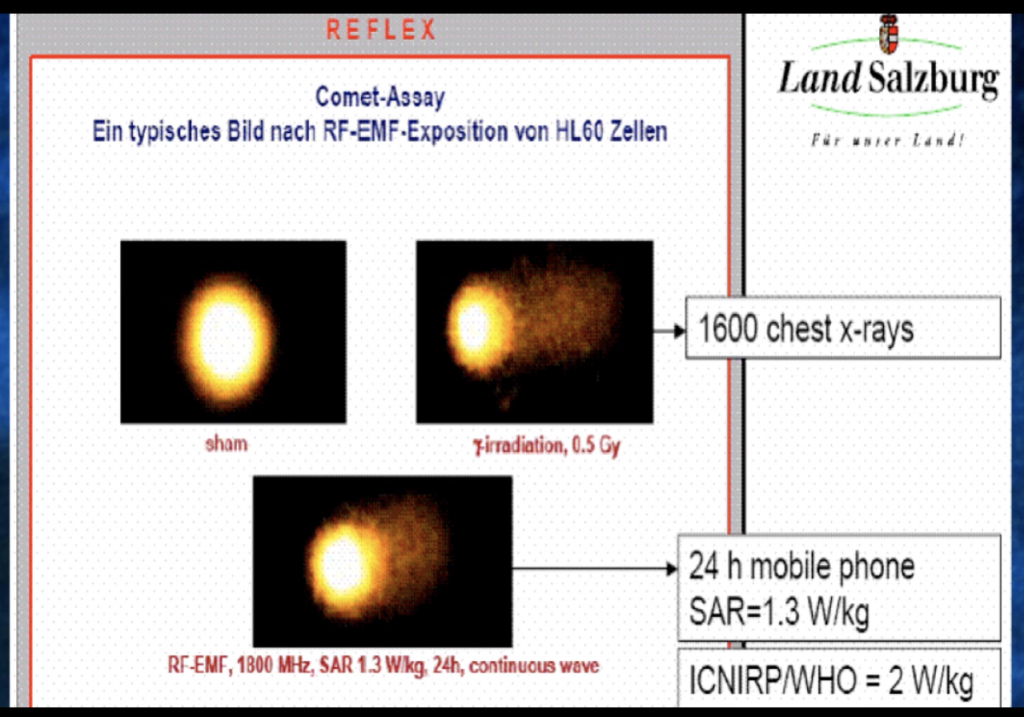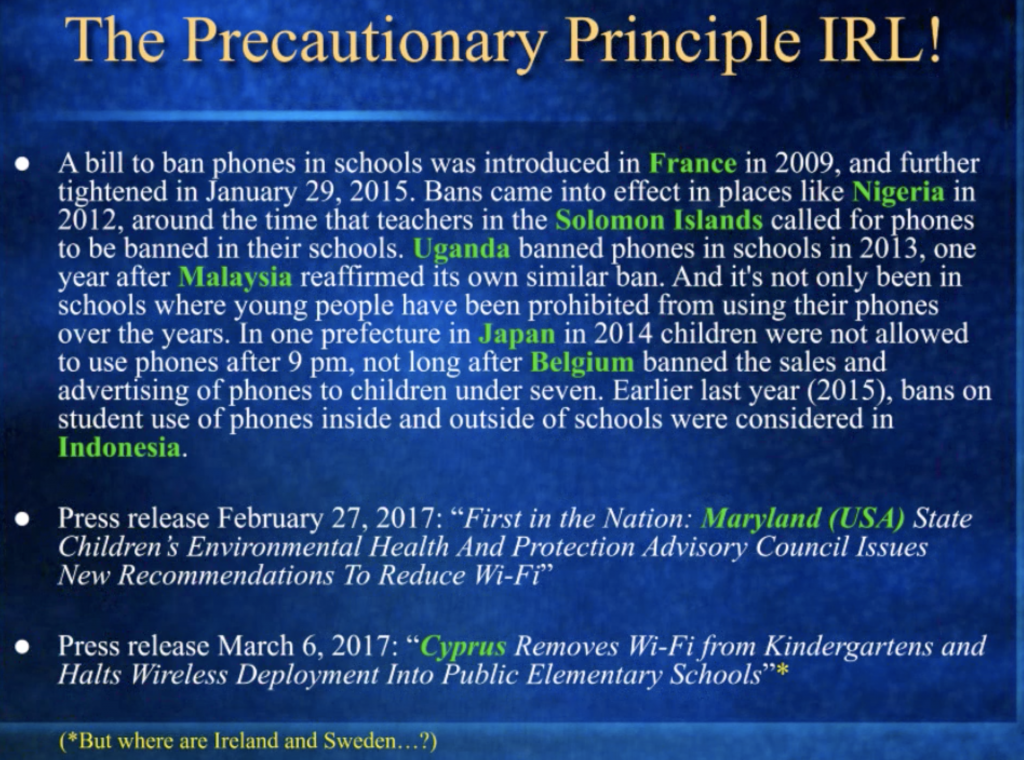Watch two best researchers on electromagnetic radiation and the dangers associated with electrosmog: Prof Olle Johansson and Prof Tom Butler speaking at Galway, Ireland Conference in November 2019
They both quote a lot of research about the dangers of non-ionising radiation, suggesting the most basic strategy to the problem ie avoiding the use of mobile phones, wifi and so on and calling for governments to review the standards that are not adequate according to the latest research.
Prof. Olle Johansson – Adverse Health Effects of Artificial Electromagnetic Fields
Olle Johansson, associate professor, head of the Experimental Dermatology Unit, Department of Neuroscience, at the Karolinska Institute (famous for it’s Nobel Prize in Physiology or Medicine) in Stockholm, Sweden, is a world-leading authority in the field of EMF radiation and health effects. He has published more than 500 original articles, reviews, book chapters and conference reports within the field of basic and applied neuroscience. He has worked with a number of international colleagues that, later on, became Nobel Laureates, including professors Andrew V. Schally and Roger Guillemin.
If you don’t have the time to watch the videos, I’ve included a few top slides to summaries their findings after the videos.
Prof. Tom Butler – What does Science say about Risks of Wireless technologies
Dr. Tom Butler is Professor of Information Systems at University College Cork, Ireland. In UCC he leads research and development on artificial intelligence technologies for regulatory compliance and risk management. Tom is also actively collaborating with a global community of scientists from several disciplines, including medical practitioners, in disseminating the findings of independent research on, and assessing the health risks of, wireless technologies such and smartphones, WiFi and 5G.
Summary of the talk by Prof. Olle Johansson – Adverse Health Effects of Artificial Electromagnetic Fields
Prof. Olle Johansson estimates that there might be over 350 million hyper-electrosensitive people worldwide already and with governments recommended guidelines exciding natural radiation this number will get bigger.
“How much more radiation penetrates your body today, compared to 10 years ago?”
The answer: “Quintillion times more – that is 1 000 000 000 000 000 000 times more!” (18 zeros)
Olle Johansson, PhD, Associate Professor in Neuroscience at the Karolinska Institute, Sweden

Recommended guidelines for electromagnetic radiation by Prof. Olle Johansson
Prof. Olle Johansson considers that natural background radiation should be a real guideline for standards regarding the exposure of non-ionising radiation.

Biological effects from non-ionizing radiation at different levels
Probably the most revealing and scary study where the researchers found that 24-hour ‘safe’ mobile phone radiation was similar to 1600 chest X-rays. Nowhere in the world, anyone would be allowed that sort of chest x-ray exposure. This study has been replicated many times.

A famous reflex study where they’ve fractured a molecule with 24h mobile phone radiation (which is considered ‘safe’) which is corresponding to 1600 chest Xrays in humans/day
The precautionary principle is a strategy for approaching issues of potential harm when extensive scientific knowledge on the matter is lacking. It emphasizes caution, pausing and review before leaping into new innovations that may prove disastrous.

The Precautionary Principle
